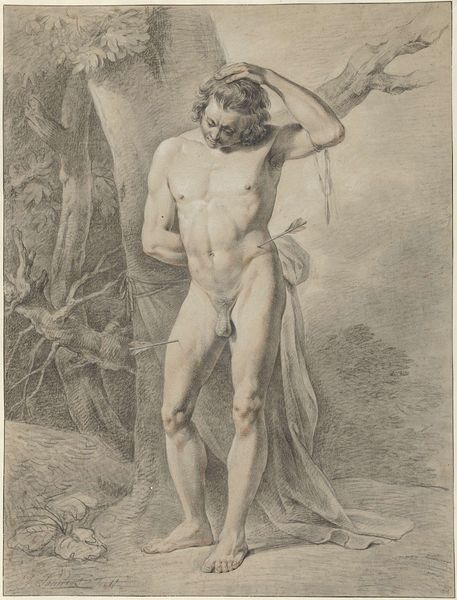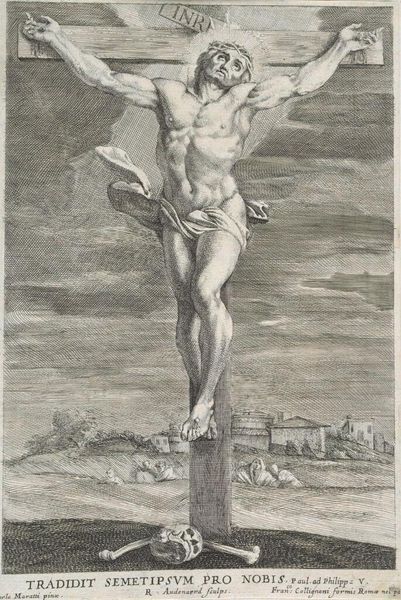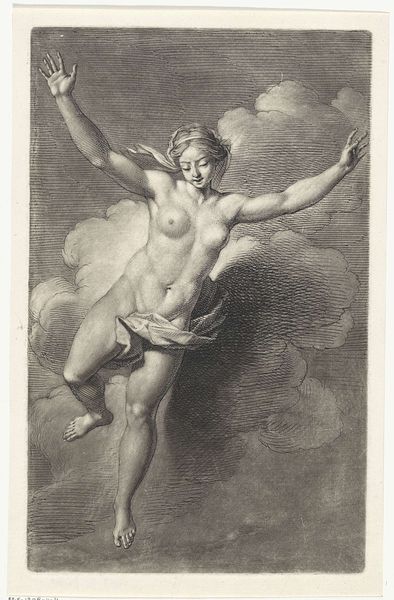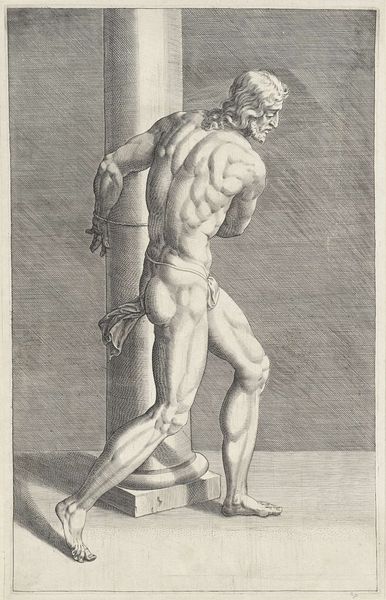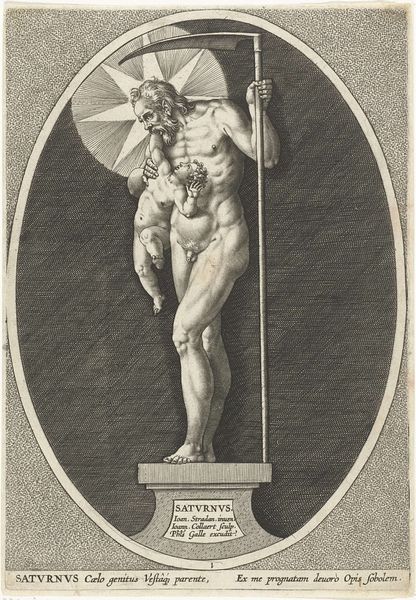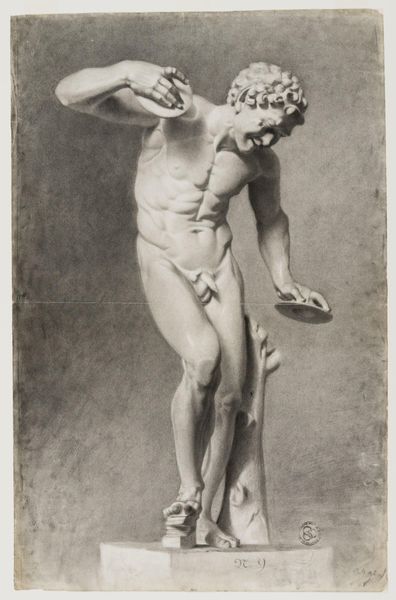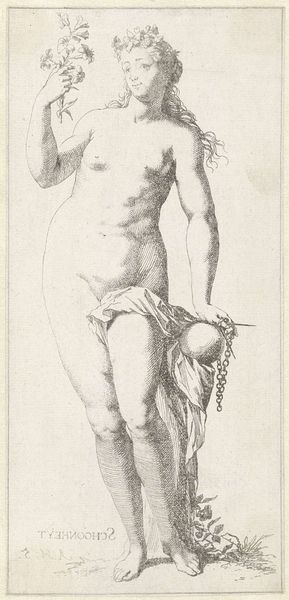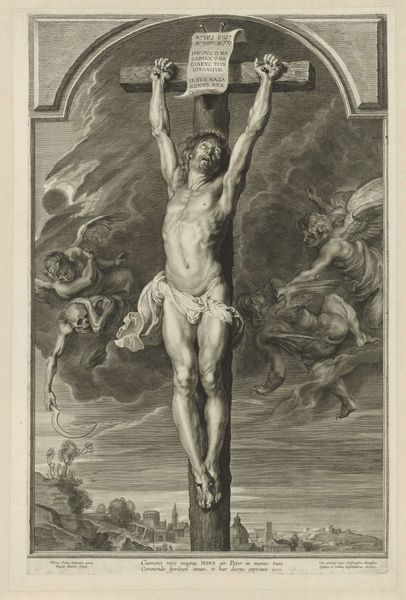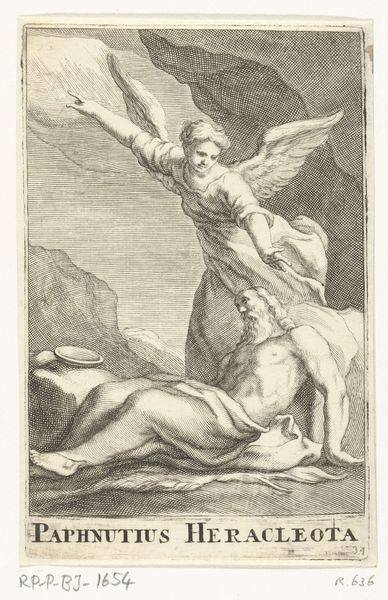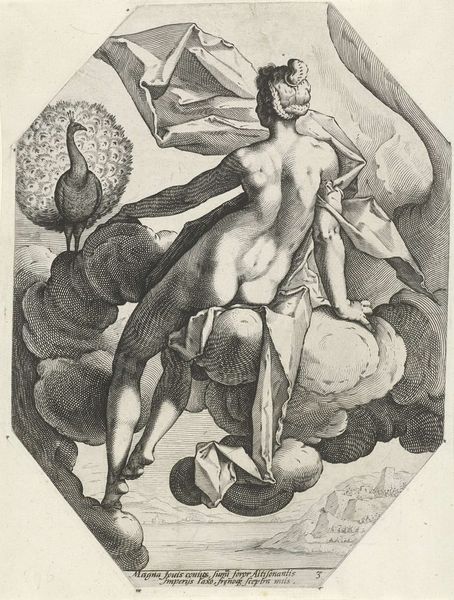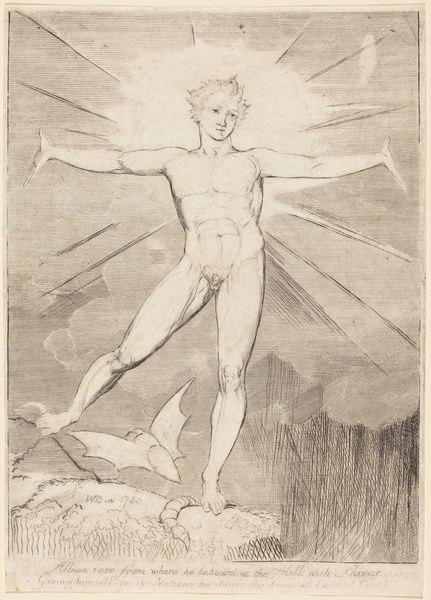
engraving
#
figuration
#
history-painting
#
italian-renaissance
#
nude
#
engraving
Dimensions: height 339 mm, width 225 mm
Copyright: Rijks Museum: Open Domain
Curator: As you can see, Jacob Matham rendered this image, Diana als Luna, likely sometime between 1589 and 1593. He used an engraving technique. Editor: My first thought is striking: the light pouring out, seems almost tangible. But then the figure... turned away from us like that, I sense both power and perhaps an aloof sadness. Curator: Indeed, the contrapposto of her stance invites the viewer's gaze, though her back faces us. Matham has also constructed a visually complex composition with radiating lines emanating from behind Luna’s head that lead to the inscription in the lower corner. We can use semiotics to decode what appears like a performance of power. Editor: This work circulated, didn't it? Considering its social role, was it purely for artistic admiration? The nudity and classical subject matter--it's a statement, a political assertion through the mythology. The moon as a symbol also gives us context of its public reception. Curator: Absolutely. The mythological is intrinsic in this period and culture. Structurally, note how the starkness of the figure is positioned relative to the nebulous clouds which creates contrast within the limited tonal scale afforded by the engraving. Consider the implied textures– the cloud versus skin; Matham employs cross-hatching strategically. Editor: Those lines serve an interesting symbolic role within the social atmosphere too. Lines are boundaries and here they represent a certain way that Diana's story would circulate through different communities, a way that society will come to know who she is. Curator: It offers an elegant framework when attempting to comprehend art history from this period, agreed. Viewing the work solely from a historical view, or formal view is to see but half the argument presented. Editor: Precisely. Through Matham's artistic language, the themes and imagery are able to invite ongoing dialogues across time.
Comments
No comments
Be the first to comment and join the conversation on the ultimate creative platform.
